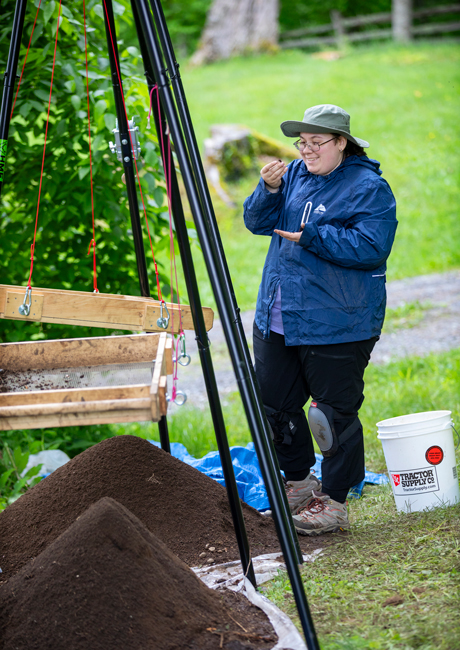Methodically rocking an archaeological sifting screen back and forth, Emmalee Clements ’25 divides artifacts from soil at a historic farmstead in the heart of the Adirondacks. With each shake, sandy clay loam slides through a hanging tripod contraption, leaving behind bits of nail, glass, and ceramic.
“Every time you shovel dirt out of a unit and into a bucket, you have to put it in a screen and then sift through it to make sure those teeny tiny artifacts are preserved. Even if it looks insignificant, like a rusty little piece of metal, it could be the most significant thing at your site to tell you what timeframe you’re looking at,” Clements said.
On location at the historic former home of Anna Newman, one of the region’s leading employers for farm laborers in the late 1800s, Clements was one of a dozen students engaged in research through an archaeological field school with Dr. Hadley Kruczek-Aaron during the summer of 2024.
“I learned an immeasurable number of skills that will be so helpful for my future career,” she said.
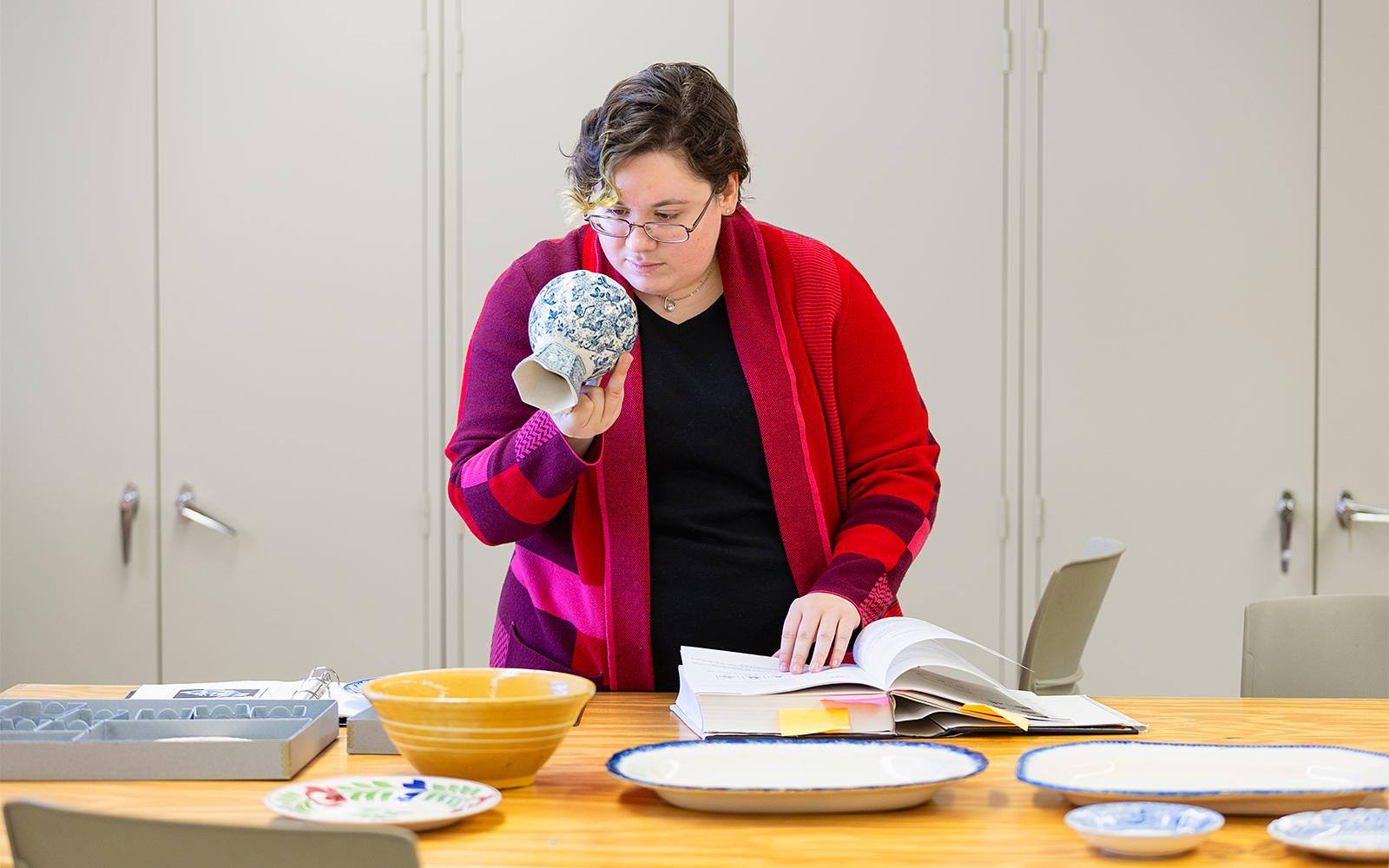
Financial Support
The hands-on experience, a requirement for the archaeological studies major, was almost out of reach for Clements. That was until she was offered the Gilchrist Award for Applied Learning, which provides financial support to students enrolled in faculty-sponsored applied learning experiences.
“It was not something I was going to be able to do without taking out even more loans and putting myself further into debt, which was not something I was prepared to do at the time. So, I would have had to drop my archaeology degree, because you can't graduate with that degree unless you've done field school. And without that degree, I wouldn't have been able to pursue that portion of my career, without the incredibly generous donation from the Gilcrest Foundation.”
The gift, established by Sally (Hanna) and Richard Gilchrist ten years ago, has provided numerous students with funding for hands-on academic experiences over the past decade, ranging from internships and student research to study abroad opportunities and field experiences like the archaeology field school. In just the past year, five other SUNY Potsdam students have benefited from the Gilchrist Award. Among those students, Mckelvie Jensen received funding to attend the Geological Society of America Northeastern Section Conference, where she spoke about the geomorphology of the dunes in the Albany Pine Bush. And Jason Donovan ’26 received financial support to pursue his certification as a Single Pitch Climbing Instructor with the American Mountain Guide Association, an extension of his wilderness education minor and public health major.
For Clements, the Gilchrist Award covered her tuition for the archaeological field school, as well as fees and equipment. “It was incredible—a blessing in my life that I don’t know if I’ll ever be able to repay,” she said.
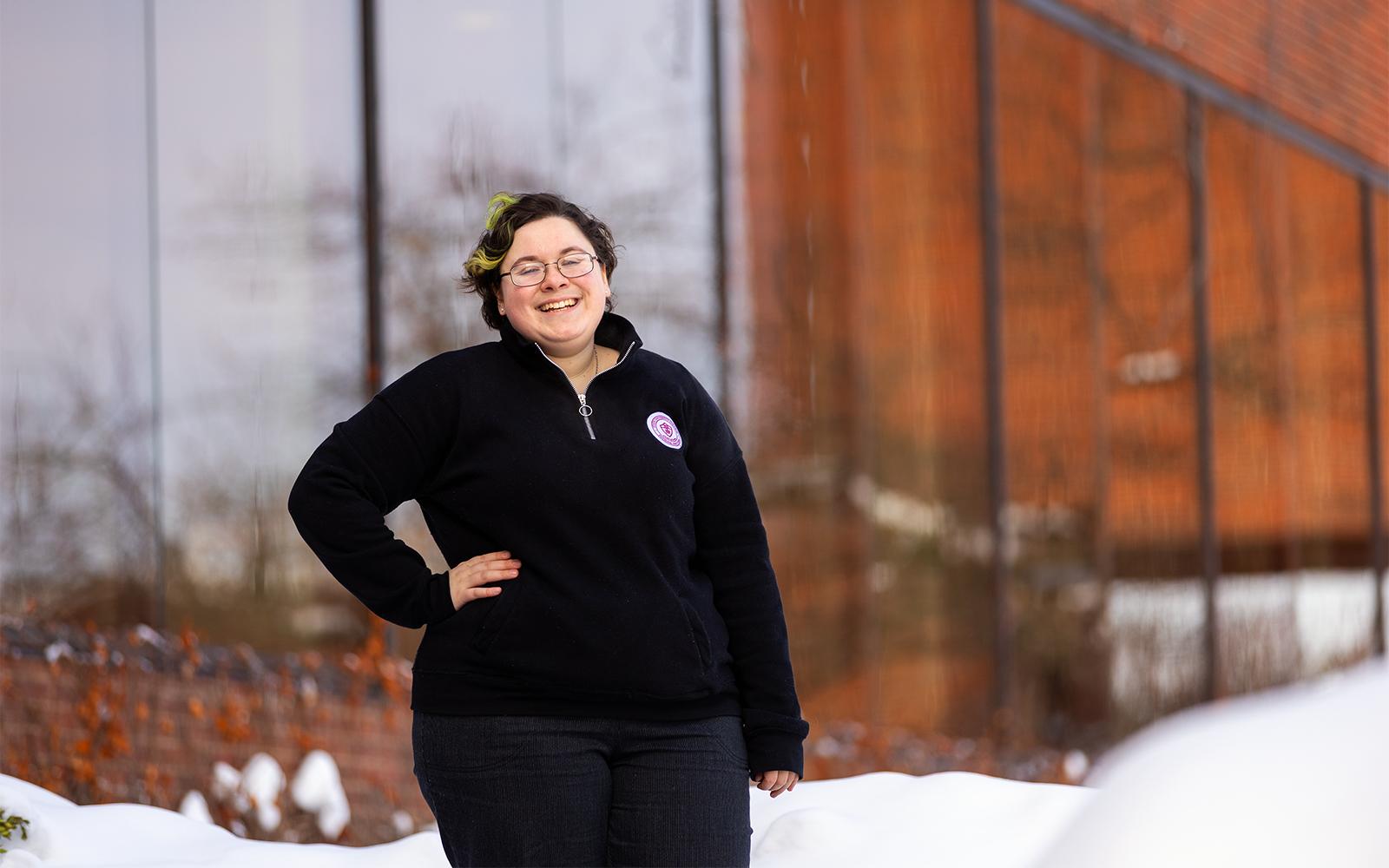
On top of the Gilchrist Award, Clements and the other students at the field school received free housing for the month through the BOB award. The grant, offered through the Lougheed Center for Applied Learning (LoCAL), supports faculty in developing and implementing applied learning experiences to help students launch successful careers. In this case, Dr. Hadley Kruczek-Aaron secured the grant funding through LoCAL, which in part, covered the month-long housing costs for all students at the field school.
“We had an amazing little house on Mirror Lake that we lived on, with kayaks, a full kitchen, two dining rooms, beds for everybody, and a shower. These are considered luxuries when it comes to field school. Usually, you live in a tent, and you visit a ‘shower family’ in town. We were living the good life on Mirror Lake. I was beyond blessed for that,” Clements said.
Dr. Kruczek-Aaron's dedication to providing students with impactful hands-on learning experiences, coupled with her success in securing grant funding to reduce costs for students, highlights the strength of the Department of Anthropology and its focus on fostering faculty-student collaboration.
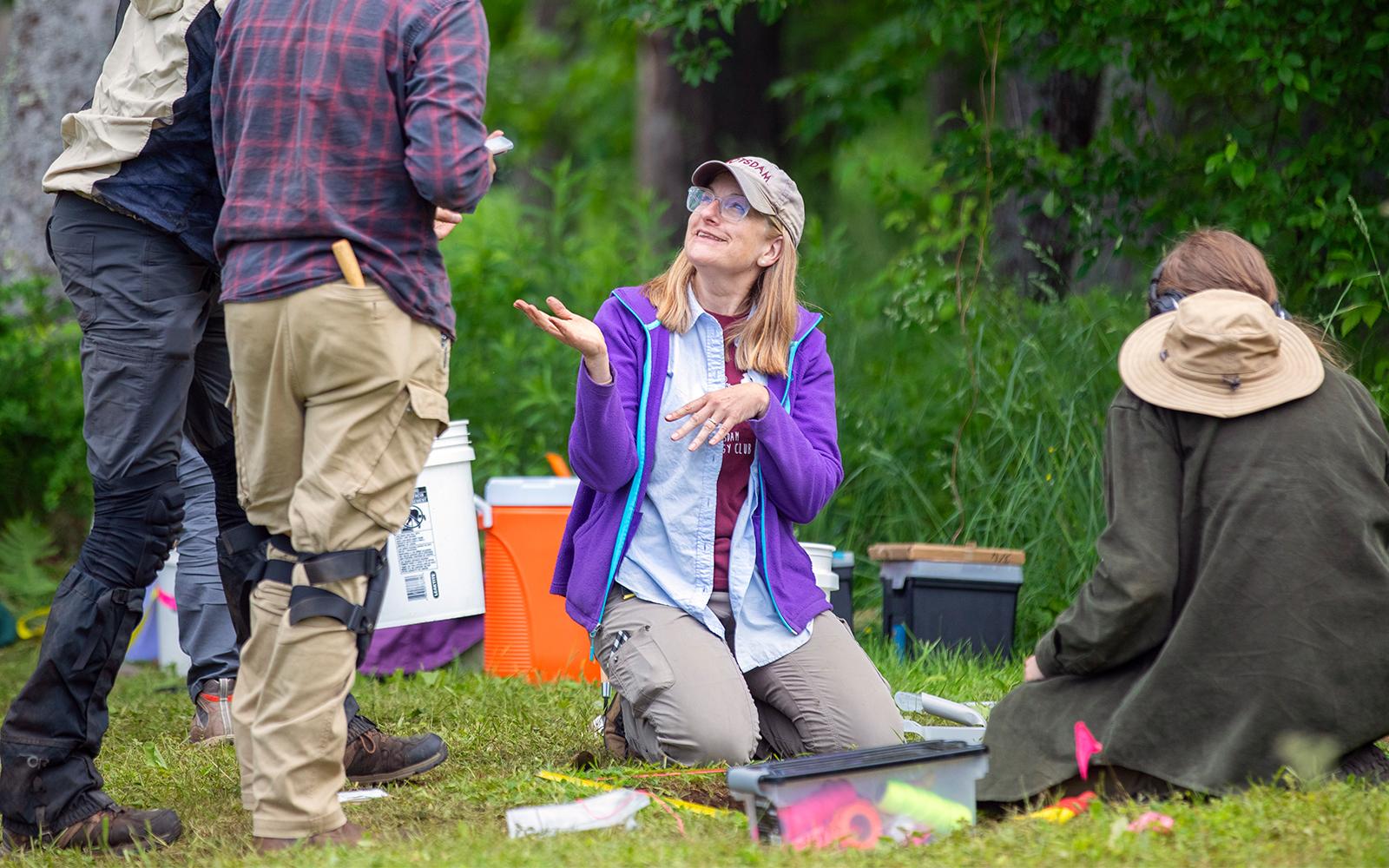
Dr. Kruczek-Aaron works with students at the field school in the Adirondacks.
Clements’ Path
Homeschooled in her youth, Clements had a non-traditional approach to her education that created unique experiences within her community. “There were a lot of field trips, and we explored a lot of things in the local area, like fish hatcheries and museums. I got a lot of education at the Hyde, the local art museum near where I live, a wonderful museum that has art programs for students,” she said.
One of the perks was being able to start her day a little bit later. Unlike other children her age who woke up at the crack of dawn to catch the bus, Clements had more flexibility, which she said was good for her mental health. When her mother wasn't leading lessons, a local author came to her house to teach chemistry and writing classes. “I really enjoyed the specialized attention I got when I was homeschooled. My mom was my teacher, but we also had a lot of friends who contributed to my learning,” she said.
Among them was a woman from her church who generously offered piano lessons throughout her high school years, completely free of charge. “She was a lovely, very generous woman, and I owe her a lot in my life. I had a varied and very well broadened education," she said.
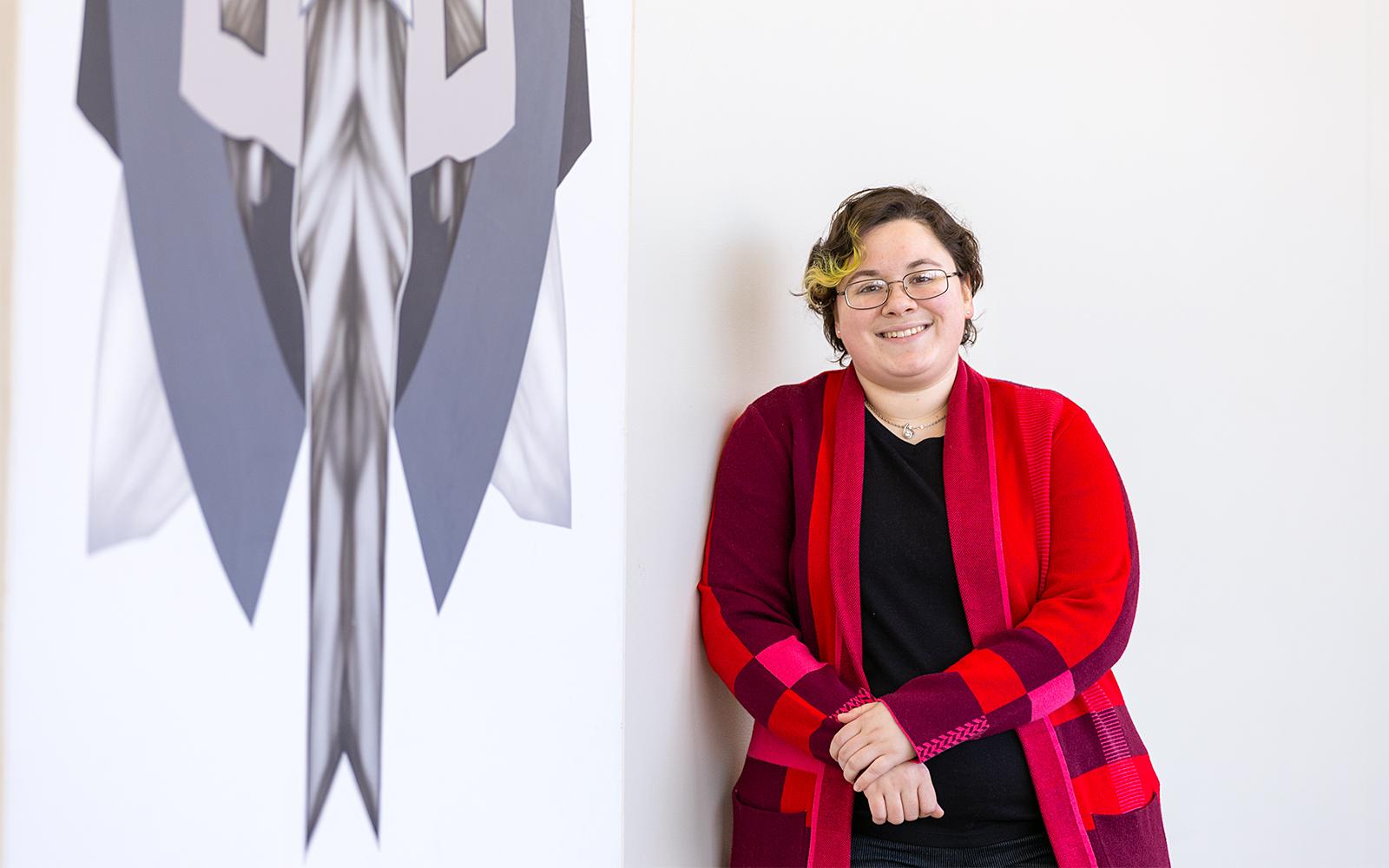
After she received her degree, she enrolled at SUNY Adirondack, a community college close to her home. Financially, it was a great choice for Clements and her family, allowing her to live at home and avoid paying for anything other than tuition. While there, she was introduced to the field of anthropology by Dr. Valerie Haskins, an impactful professor who in turn, recommended SUNY Potsdam’s undergraduate program in anthropology. “She was wonderful. She was the woman who got me into anthropology in the first place. Her physical anthropology class was what started me on my journey here at SUNY Potsdam,” she said.
She visited SUNY Potsdam during a transfer weekend and decided to pursue both anthropology and archaeological studies. "My parents wanted me to go to the transfer weekend to make sure I liked the campus. I loved it. It was beautiful. It was fall, and all the leaves were turning, and the ivy was turning red. It was wonderful. It was exactly what I imagined my college would look like,” she said.
Almost every semester since arriving at SUNY Potsdam, she has taken classes with Dr. Nasser Mallit, who leads the forensic anthropology courses at the College. For one assignment in her Human Osteology class, she said she was tasked with measuring 30 different skulls to collect quantitative data. “I remember spending four hours one day in the lab measuring with my calipers, listening to my sad emo music, and drinking energy drinks. I love his classes so much—you learn crazy interesting things about the human body,” she said.
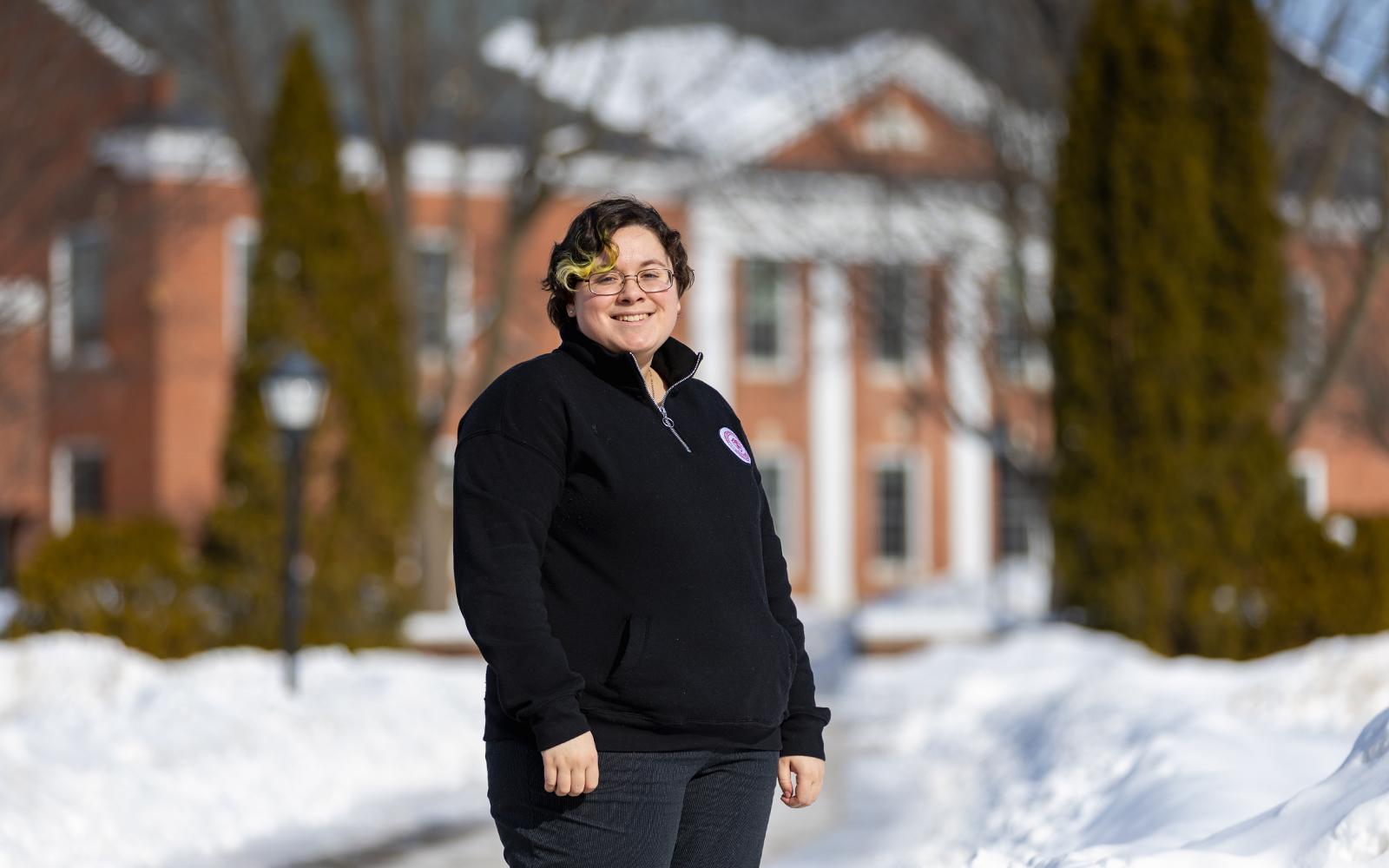
She has continued to excel at the College, landing on the Dean’s List or the President’s List every semester. In addition to dynamic classes with Dr. Malit and Dr. Kruczek-Aaron, she has worked with Dr. Tim Messner, Dr. Sergio Lopez, and Dr. Lydia Rodriguez. “They are all wonderful people. I’ve had classes with Dr. Rodriguez, who is an absolutely fascinating teacher. She’s a linguistic anthropologist and learning about the different ways that languages on our planet are disappearing at such an alarming rate [has been intriguing],” she said. “With Dr. KA, it's very similar to being homeschooled; it's so comforting to be in her class because it's like learning from someone close to you.”
When Clements graduates later this year with her dual degree in anthropology and archaeological studies, she is looking ahead to an exciting career that she hopes will focus on conducting research on neanderthals within the field of paleoanthropology, becoming a forensic anthropologist, and then eventually pursuing her Ph.D. in anthropology.
“You can go anywhere you want with this degree because it's so versatile,” she said. “I have made some incredible friends here, potentially lifelong friends, and especially the professors. I hope to be in contact with them far into the future because they've made such a huge impact on my life.”
Article and photos by Jason Hunter

